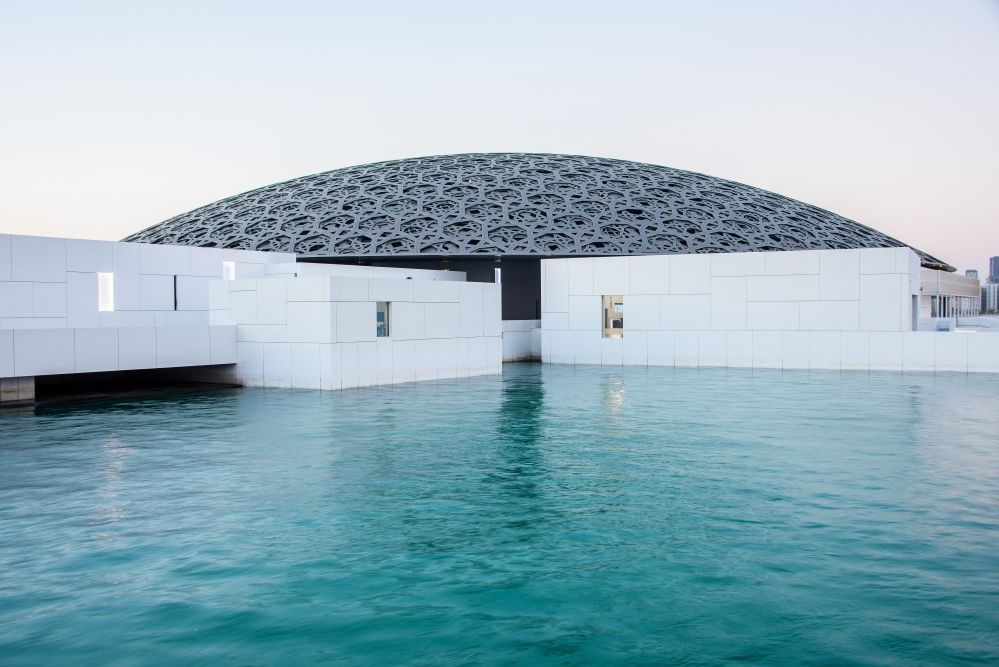A unique museum. It is with this concept that the Louvre Abu Dhabi premiered. With the purpose of creating an incomparable cultural reach between two countries (a Western country and a Middle Eastern country with Arab culture), this is the first universal museum of the United Arab Emirates. It offers a mix of cultures, placing side by side works from different continents, but from the same period. It has an ancient and contemporary collection of historical and sociological interest from all over the world.
The design, signed by the winner of the Pritzker Prize, Jean Nouvel, had as its main guideline to emphasize the combination of a rare encounter. The architect worked based on an important element of Arab architecture, the dome, which measures 180 meters in diameter and is made of a perforated material that provides different foci of natural light.
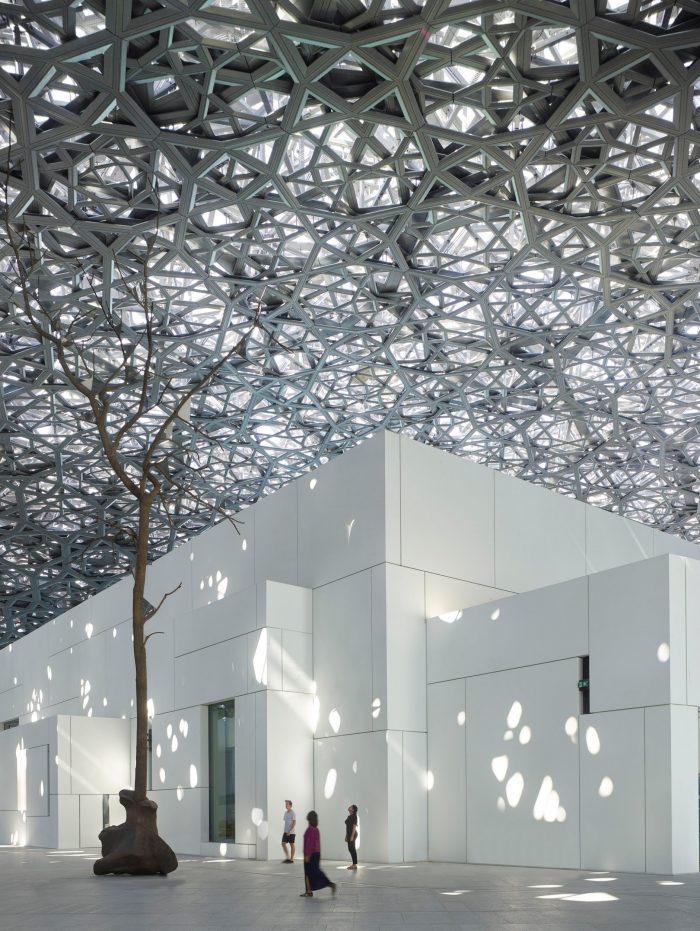
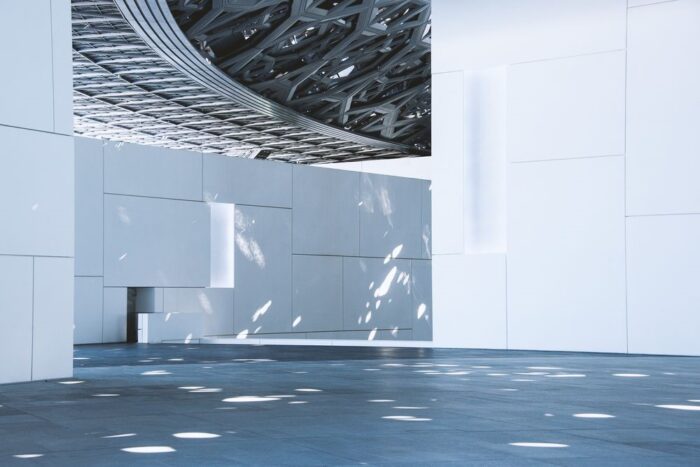
It is a “city” on the sea in the form of a museum, distributed across 55 individual buildings with 23 galleries. One of the most innovative projects built in recent times, the work aims to value the connection of the sea with the light, inviting the visitor to explore its different buildings.
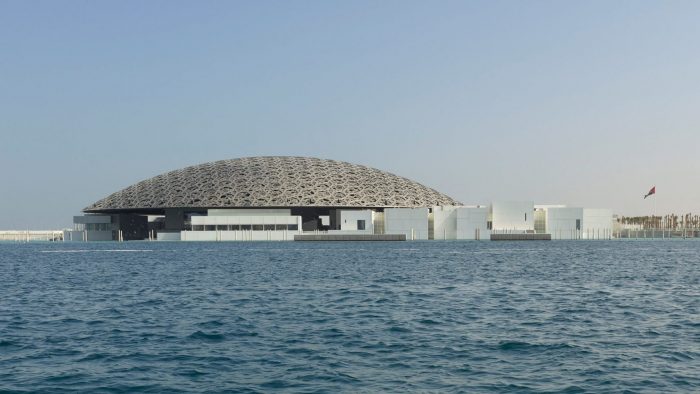
The second Louvre museum (and the first “outside” of the Louvre Palace in Paris) is located in a city in the north of France, Lens, and bears the same name. Opened in 2012, it was signed by the Japanese architecture firm SANAA (Sejima, Nishizawa and Associates).
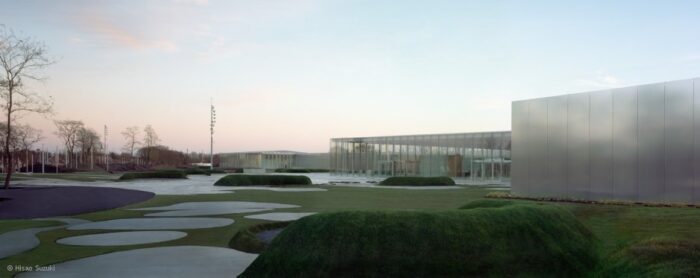
The idea of creating a museum affiliate was also helpful to help revitalize the city. With a design located on a an area covering 20 hectares, it was distributed across 360 meters in length and 28 thousand square meters. The roofs, as well as the facade, are partially made of glass, reflecting and enabling the lightness of natural light.
The building proposes an integration with the landscape, without contrasting negatively with its surroundings. The featured material is a polished aluminum skin, used both on the inside and outside.
The surface reflects and blurs what lies before it, resembling the hall of mirrors in the Palace of Versailles and creating a greater integration of the individual with the works exhibited. The building skin brings a message about understanding the contemporary world due to the blurred sharpness in contact with old works.
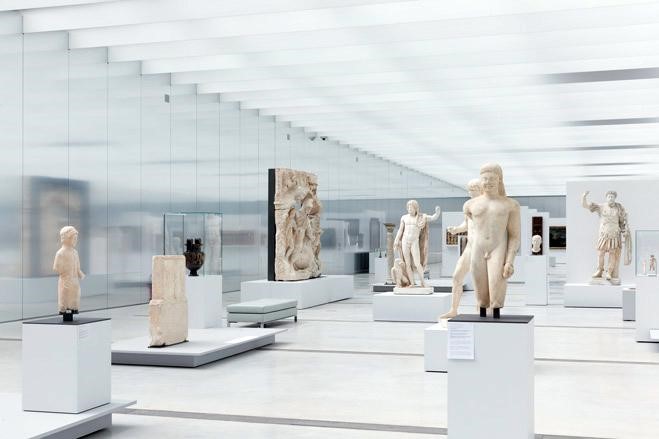
The original, located in the Louvre Palace, is at the top of the list of the busiest museums in the world. Here you can visit Monalisa and Venus de Milo, among other extraordinary works divided into eight thousand years of history.
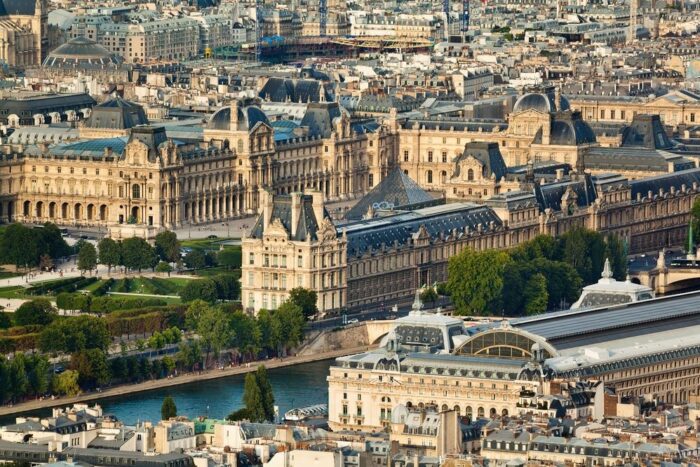
The building is fragmented into nine departments, with a collection with more than 380,000 pieces and permanent exhibition of over 35,000 works of art.
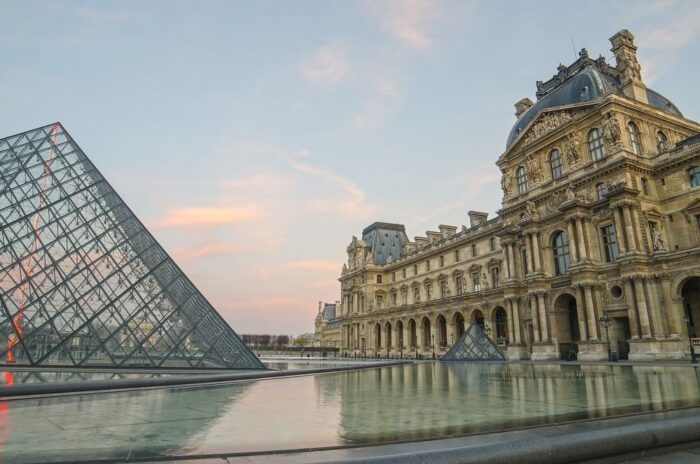
The pyramid, the famous symbol of the museum, was designed by the Chinese architect Ieoh Ming Pei at the center of the palace and today marks the main access.
There are three kilometers of galleries open to the public, a true immersion in history.
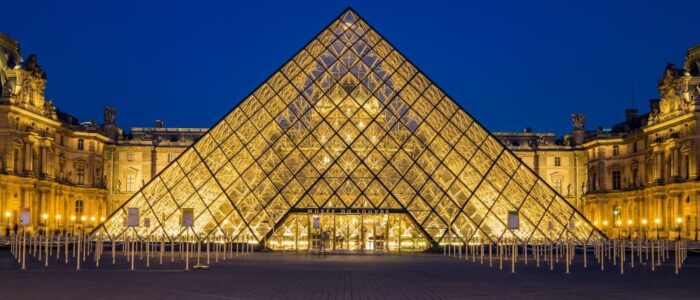
What did you think of the new Louvre Museum proposals? Globalization allows us to have a greater connection between “different worlds”, encounters of cultures, and possibilities to combine modern architecture with elements from the past.
Using a contemporary building to exhibit works of art is certainly a fascinating contrast! At the same time, the Louvre Palace will always be our greatest storyteller. Au revoir!
